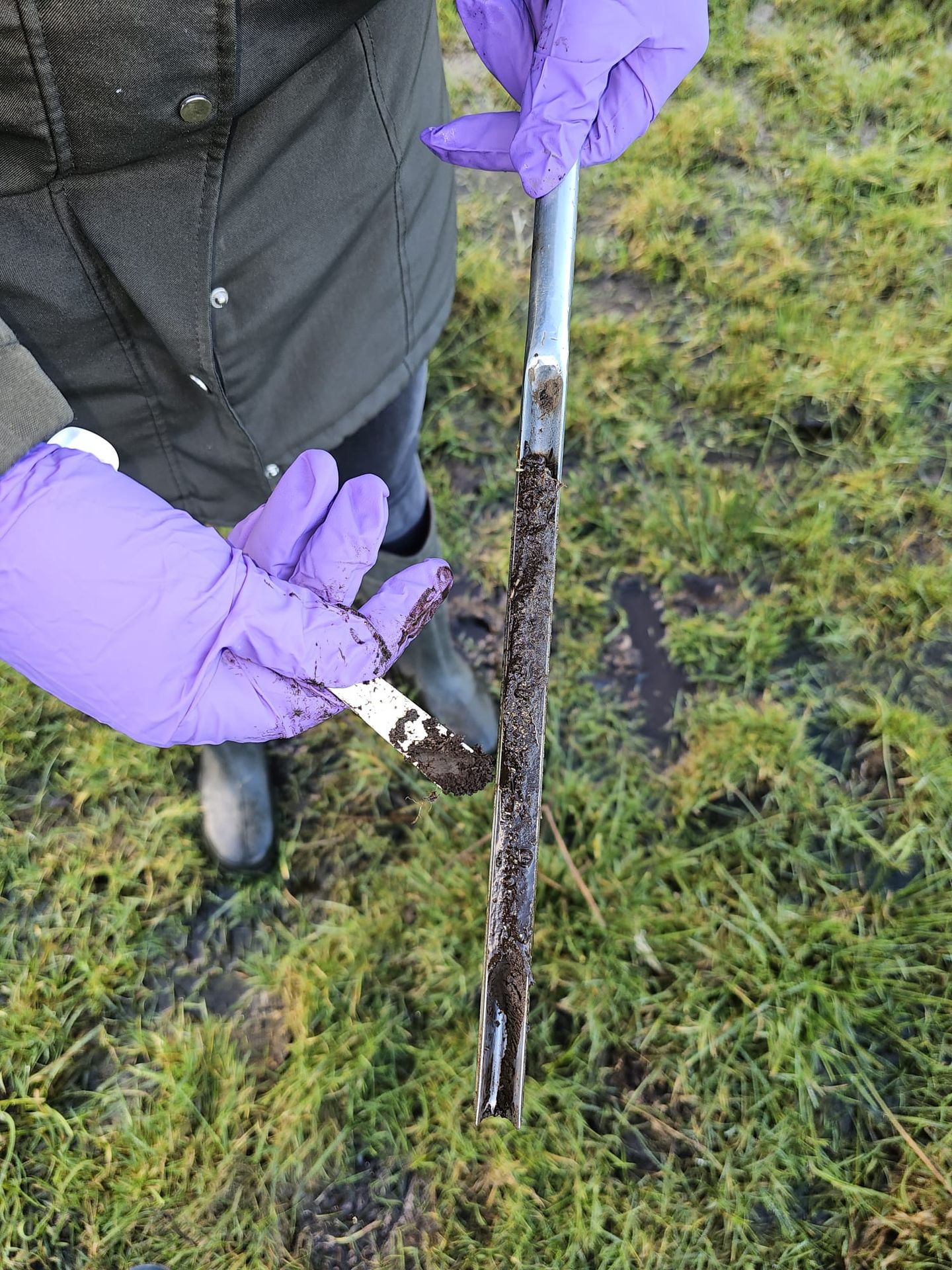How soil microbes reveal Roegwold’s peatland restoration journey
By Afnan Suleiman – Soil microbiologist advisor (Bioclear earth)
The Roegwold nature reserve in Groningen, Netherlands, is a unique peatland area with a long and interesting history. Once dominated by agriculture, this landscape was shaped by farming for decades before becoming a protected nature reserve in 1998. The restoration from farmland to its previous wetland landscape offers a unique opportunity to study how nature recovers over time.
Roegwold extends from Kolham through Slochteren and Schildwolde to Schildmeer and includes sub-areas like Westerpolder, Ae’s Woudbloem, Dannemeer, Tetjehorn, and Haansvaart. These areas have been restored at different times, with Tetjehorn established in 2000 and Dannemeer as the most recent addition in 2017. But how do we know if these peatlands are truly recovering? One of the best ways to find out is by studying what’s happening beneath the surface—inside the soil itself.
Soil health through microbes
At BUFFER+, we are investigating how well Roegwold is restoring its ability to store carbon, retain water, and support biodiversity. One of the approaches to measure this is by analyzing soil microbes—the tiny but powerful life forms that tell us a lot about how healthy a land really is. That’s why we teamed up with our partners from Bioclear earth, a consultancy specializing in nature-based solutions (www.bioclearearth.nl). Their soil health team is using advanced DNA sequencing to study microbial communities in different soils in the Netherlands, including the Roegwold’s soil.
Microbes are the invisible workers of the soil, breaking down organic matter, cycling nutrients, and playing a crucial role in carbon storage. Some microbes help keep carbon locked in the soil, while others release it as CO₂ and methane, contributing to climate change. By analyzing their DNA, Bioclear’s team can identify which microbes are present, how diverse the microbial community is, and whether the peatland is transitioning back to a healthy, carbon-rich ecosystem. Some microbes thrive in wet, undisturbed peatlands, while others are indicators of past farming activity. By studying which microbial groups dominate, we can track the soil’s recovery journey and understand whether it is successfully returning to a natural state.

Understanding the Full Picture
While microbes tell us a lot, they do not work alone. Their activity is influenced by the soil’s organic matter, moisture, and nutrients. To complement our microbial DNA analysis, we are also measuring important soil parameters for its organic matter content, which indicates how much carbon is being stored. We measure nutrient availability, which influences both microbial life and plant growth. By combining these data points, we can assess how well Roegwold’s soil is recovering from its agricultural past and whether it is functioning as an effective carbon sink today.
Tracking Roegwold’s Recovery
Since Roegwold’s sub-areas were restored in different years, we are studying how microbial life and soil conditions have changed over recovery time. Our first soil sampling took place in January, capturing the landscape’s winter state, and the next round is planned for summer. This seasonal approach helps us track how microbial assembly shifts throughout the years.
Microbes may be tiny, but they tell a big story about how Roegwold’s peatlands are evolving. As our research continues, we will gain an even better understanding of how restored peatlands contribute to climate resilience and nature conservation. We are excited to share our findings soon! In the meantime, take a look at some of the moments captured during our winter soil sampling.